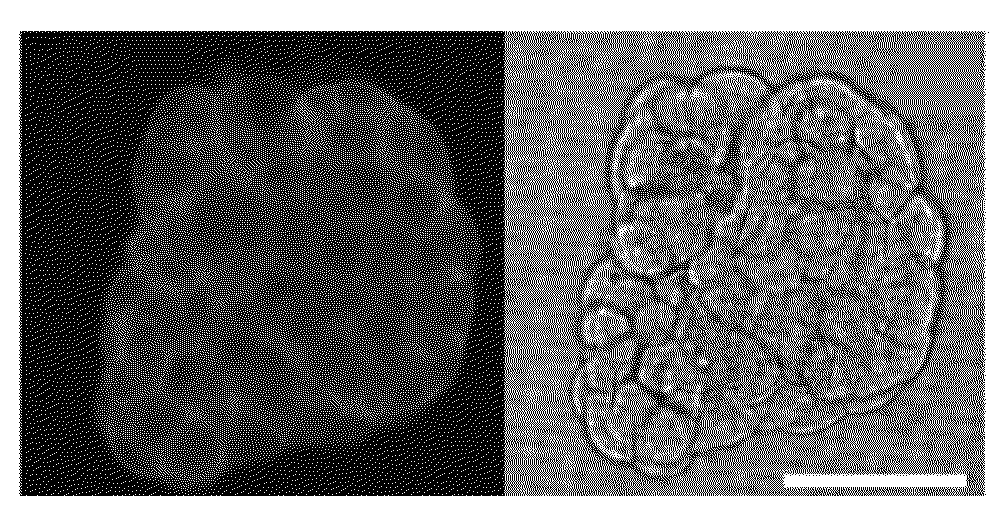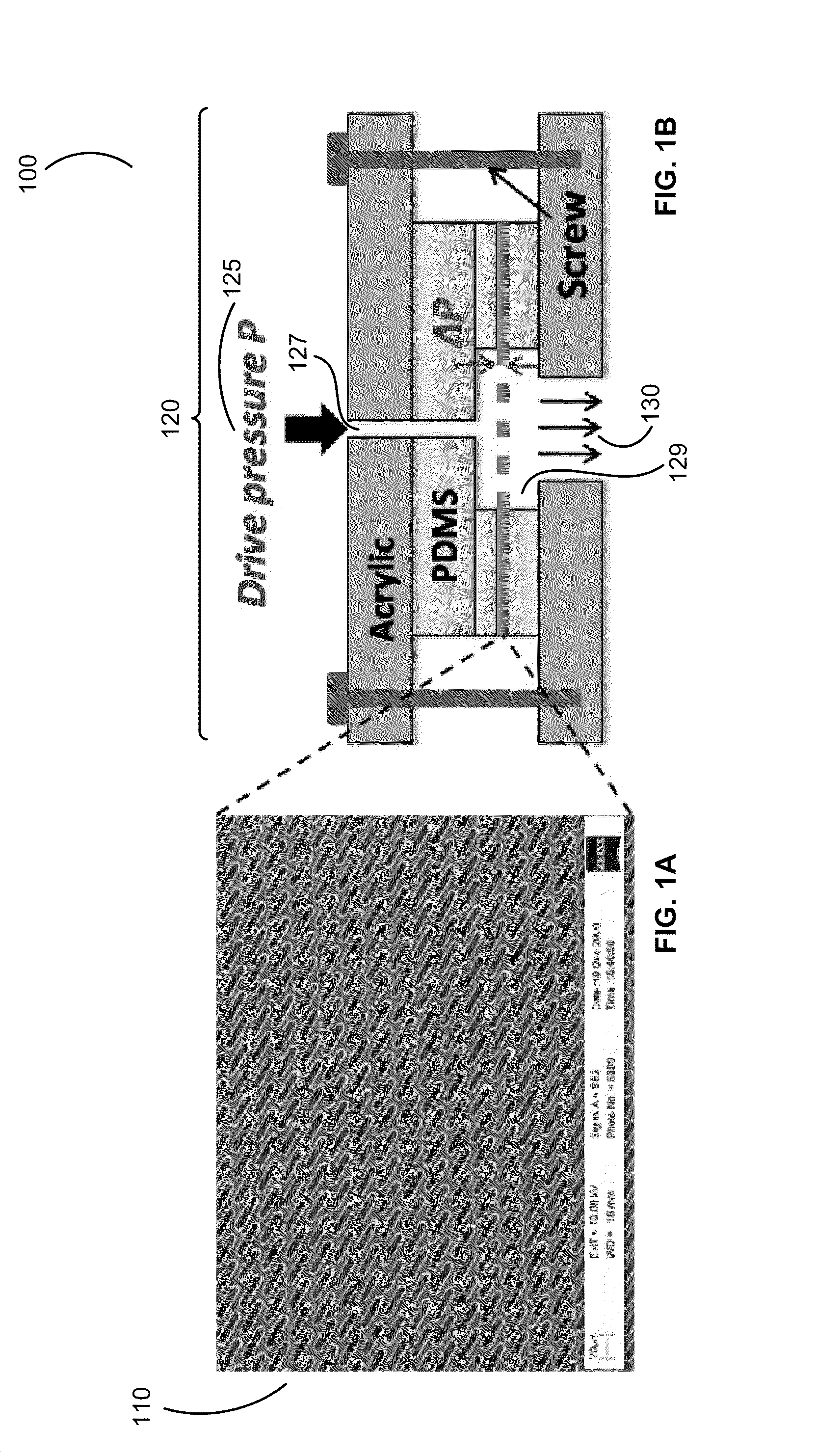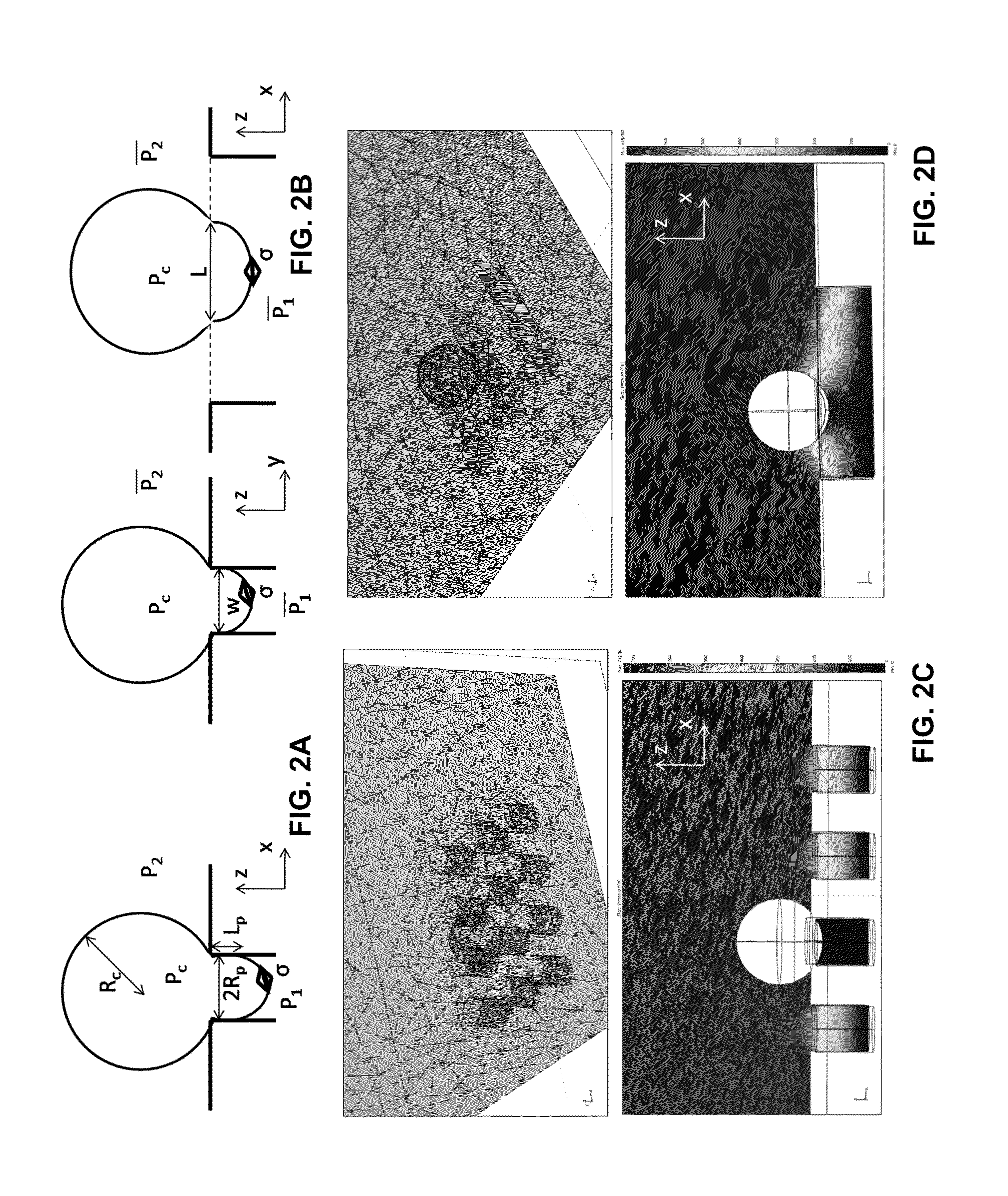Methods and design of membrane filters
- Summary
- Abstract
- Description
- Claims
- Application Information
AI Technical Summary
Benefits of technology
Problems solved by technology
Method used
Image
Examples
example 1
Illustrates a Comparison of a Pore Filter and a Slot Filter
[0076]FIG. 2 illustrates analytical and finite-element models of captured CTCs. FIG. 2A and FIG. 2B are analytical cortical-liquid core models of CTC captured on pore and slot respectively. FIG. 2C and FIG. 2D are 3D FEM model of pore and slot filtrations respectively, built by COMSOL Multiphysics. The pore and slot filters used in FIG. 2C and FIG. 2D have the same open-factor. A drive pressure of 0.1 psi is applied as a boundary condition. The simulation results show the pressure distribution around the captured cells. Cell captured by slot is subject to a smaller trans-filter pressure drop order to correlate the transfilter pressure drop ΔP with the drive pressure P, 3D fluid models of pore and slot filter filtrations were built by using finite-element simulation tool COMSOL Multiphysics (FIG. 2C, D). The captured cells were modeled as a solid blocking the flow. Calculated from the postprocessing of pressure distribution,
Δ...
example 2
Illustrates a Staining Assay to Determine Live Cancer Cells
[0083]In this example, filtration of 1 mL whole blood sample spiked with PC-3 cancer cells took less than 5 min under the minimum possible drive pressure. Compared to the low sample processing speed reported for other lateral flow microfluidic based CTC filtration devices (Tan, et al. Biomed Microdevices, 2009, 11, 883-892; Kuo, et al. Lab Chip, 2010, 10, 837-842; Mohamed, et al. J. Chromatogr., A, 2009, 1216, 8289-8295), and microfluidic devices combined with immunoaffinity based selection method (Nagrath, et al. Nature, 2007, 450, 1235-1239; Helzer, et al. Cancer Res., 2009, 69, 7860-7866; Gleghorn, et al. Lab Chip, 2010, 10, 27-29), we can achieve a much higher throughput. FIG. 4 shows the examples of live and dead cancer cells using Calcein-AM and PI staining assay.
[0084]Viable and dead cancer cells can be detected using a calcein-AM and PI staining assays. FIG. 4 shows examples of captured cancer cells and the remaining...
example 3
Illustrates the Time-Dependent Viability Drop During Constant-Pressure Filtration
[0085]Due to its high throughput, membrane filters have been shown to be capable of handling samples with large volume (e.g., 7.5 mL) in clinical trials (see, Paterlini-Brechot, et al. Vona, et al. Kahn, et al.; Zabaglo, et al.). However, when high viability is also desirable, more constraints need to be taken into consideration. To examine the capability of processing samples with large volume, Calcein-AM pre-labeled PC-3 cancer cells were spiked into 1-5 mL 1:4 diluted blood samples (e.g., five times diluted blood). Filtration was carried out under different drive pressures, ranging from 0.10 psi to 0.20 psi. Filtration time was recorded for each run. FIG. 5 shows the relations between the viability with filtration time at different drive pressures. For a given drive pressure, filtration time is also a key parameter which greatly influences the viability.
[0086]As expected, filtration of samples with l...
PUM
 Login to View More
Login to View More Abstract
Description
Claims
Application Information
 Login to View More
Login to View More - R&D
- Intellectual Property
- Life Sciences
- Materials
- Tech Scout
- Unparalleled Data Quality
- Higher Quality Content
- 60% Fewer Hallucinations
Browse by: Latest US Patents, China's latest patents, Technical Efficacy Thesaurus, Application Domain, Technology Topic, Popular Technical Reports.
© 2025 PatSnap. All rights reserved.Legal|Privacy policy|Modern Slavery Act Transparency Statement|Sitemap|About US| Contact US: help@patsnap.com



